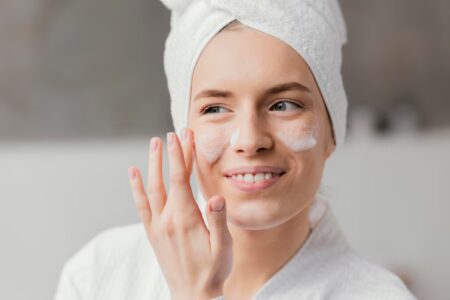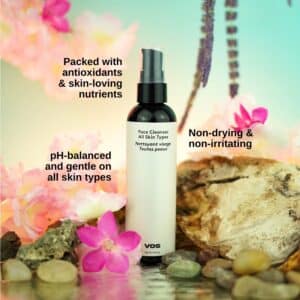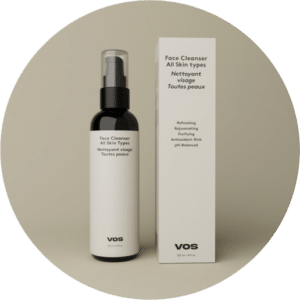A healthy skincare routine starts with proper cleansing. The way you wash your face directly impacts the effectiveness of the rest of your skincare steps. While it might seem simple, cleansing involves more than just water and soap. With the right techniques and products, your cleanser can help maintain skin balance, reduce irritation, and prevent breakouts. This article outlines practical face cleanser tips to elevate your skincare routine naturally.
Understanding the Role of a Face Cleanser
A face cleanser does more than remove makeup or excess oil. It’s the foundation of any skincare routine. Proper cleansing helps remove dirt, pollutants, and buildup from the skin, preventing clogged pores and improving skin texture over time. Choosing the right cleanser for your skin type and using it correctly is essential.
Choosing the Right Cleanser for Your Skin Type
No single cleanser fits every skin type. Different formulations cater to varying needs. Choosing a cleanser based on your skin type is the first step toward a healthier skincare approach.
For Oily or Acne-Prone Skin
Look for gel-based or foaming cleansers with ingredients like salicylic acid, benzoyl peroxide, or tea tree oil. These help control oil production without stripping the skin.
For Dry or Sensitive Skin
Cream-based or hydrating cleansers are ideal. Ingredients such as glycerin, hyaluronic acid, and ceramides help retain moisture and maintain the skin’s barrier.
For Combination Skin
Consider a mild cleanser that balances both oily and dry areas. Avoid harsh cleansers that may increase dryness or stimulate more oil production.
For Normal Skin
Those with normal skin can opt for a gentle, pH-balanced cleanser that maintains skin equilibrium without causing dryness or oiliness.

Natural Ingredients to Look For in a Face Cleanser
Using cleansers with natural ingredients can minimize skin irritation and support skin health. While synthetic ingredients are not inherently harmful, naturally derived compounds may suit sensitive or reactive skin.
Aloe Vera
Known for its calming and hydrating properties, aloe vera soothes irritation and supports healing.
Chamomile
This botanical extract has anti-inflammatory benefits, making it ideal for calming sensitive skin.
Green Tea
Rich in antioxidants, green tea can help reduce inflammation and support the skin’s defense against environmental damage.
Honey
A natural humectant, honey retains moisture and provides gentle antibacterial support.
Tips for Proper Face Cleansing
Even the best cleanser can fall short if not used properly. Here are essential face cleanser tips to elevate your skincare routine naturally and effectively.
Wash Your Hands First
Before touching your face, wash your hands to avoid transferring dirt, oil, or bacteria to your skin.
Use Lukewarm Water
Hot water can strip natural oils and irritate the skin, while cold water may not effectively dissolve buildup. Lukewarm water is ideal for opening pores and cleansing thoroughly.
Apply with Gentle Circular Motions
Using firm, circular motions with your fingertips helps cleanse without tugging at the skin. Avoid using rough cloths or sponges, especially on sensitive areas.
Don’t Rush the Process
Spend at least 30 seconds massaging the cleanser into your skin to give active ingredients time to work and ensure a complete cleanse.
Rinse Thoroughly
Incomplete rinsing can leave residue, leading to clogged pores or irritation. Make sure to remove all traces of cleanser from your skin.
Pat Dry with a Clean Towel
Avoid rubbing your face with a towel. Instead, gently pat it dry with a soft, clean cloth to reduce friction and irritation.

When and How Often to Cleanse
Understanding when to cleanse and how often is just as important as what product you use.
Morning Cleansing
Cleansing in the morning helps remove sweat, oil, and overnight product buildup. It prepares the skin for better absorption of daytime products.
Evening Cleansing
At night, it’s essential to remove sunscreen, makeup, and pollutants. This step supports skin repair during sleep and prevents clogged pores.
Avoid Over-Cleansing
While cleansing twice a day works for most skin types, over-cleansing can lead to dryness and irritation. Listen to your skin and adjust based on how it reacts.
Common Mistakes to Avoid
Despite good intentions, common cleansing errors can compromise your skincare efforts.
Using Harsh Products
Cleansers with strong alcohols or high levels of sulfates can strip the skin’s natural barrier, leading to increased sensitivity or oil production.
Ignoring the Neck and Jawline
These areas accumulate oil and dirt like the rest of your face. Always extend your cleansing to the neck and jawline for a consistent routine.
Using Dirty Towels
Reusing towels can transfer bacteria and oils back to your skin. Use a fresh towel or allow your face to air dry when possible.
Skipping Double Cleansing
If you wear makeup or sunscreen, consider double cleansing. Start with an oil-based cleanser to break down products, followed by a water-based cleanser to clean the skin.
Creating a Routine That Works for You
Building a skincare routine should be based on your individual needs. Your skin may change with seasons, age, and lifestyle, so it’s important to reassess your cleanser periodically. Keep track of how your skin responds and make adjustments as necessary. Consistency, gentle care, and using the right products will support long-term skin health.
Conclusion
Effective cleansing is a critical yet often overlooked step in skincare. With the right cleanser and a few practical habits, you can significantly improve your skin’s health and appearance. These face cleanser tips to elevate your skincare routine naturally provide a foundation for achieving clean, balanced, and resilient skin. By focusing on consistency and choosing products that suit your skin type, your daily routine can become both efficient and beneficial.







